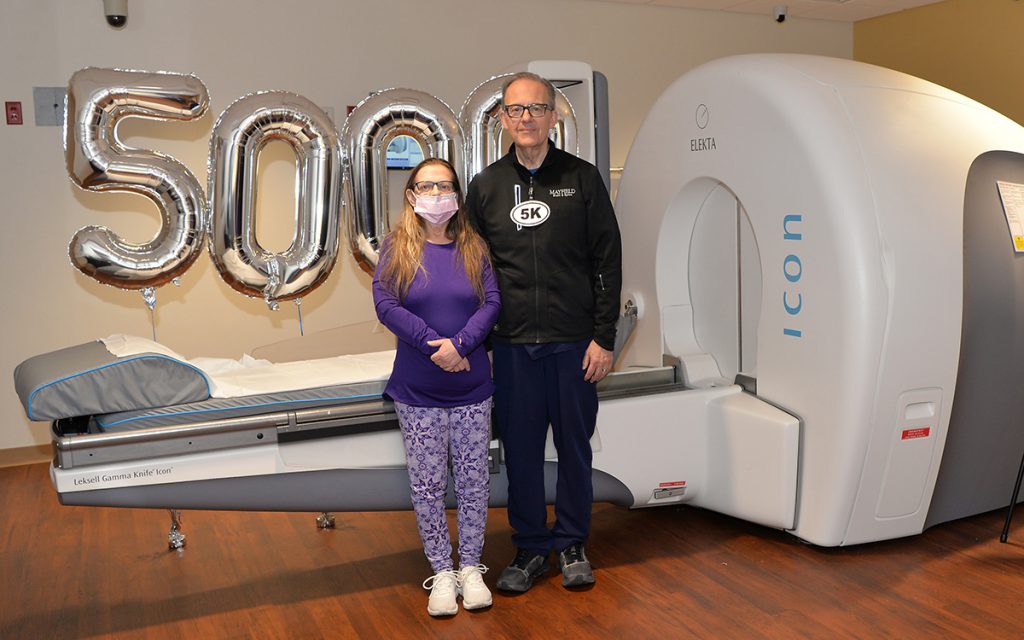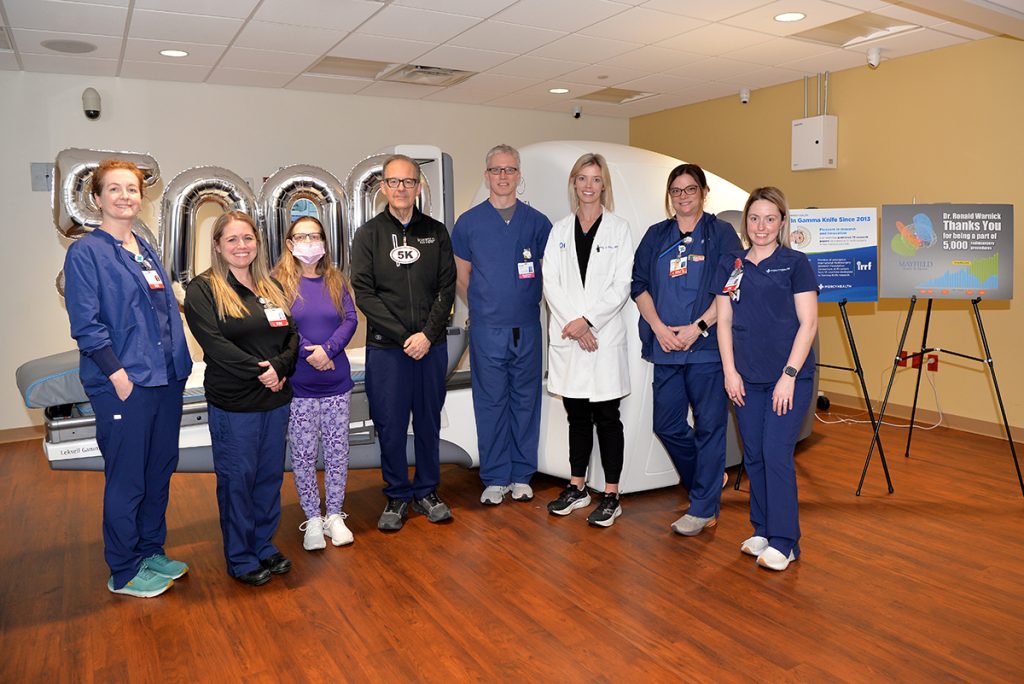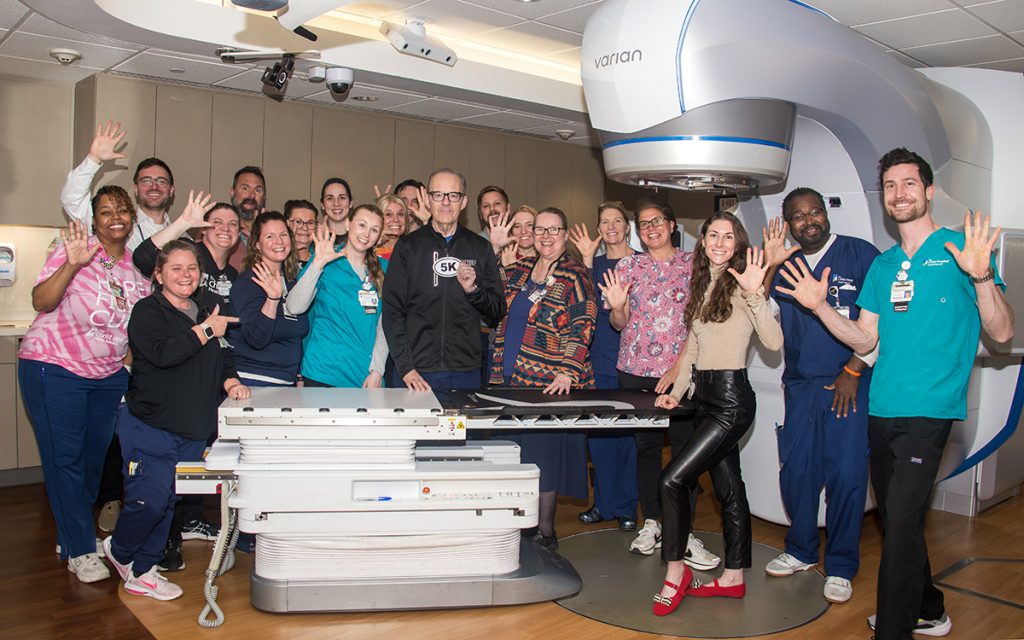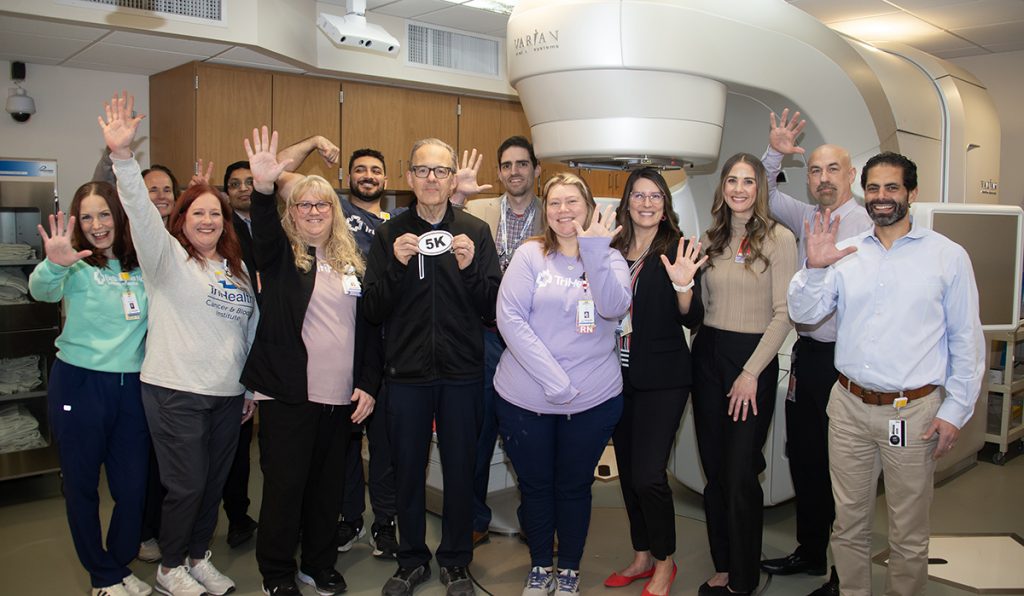Dr. Ronald Warnick, a neurosurgeon at Mayfield Brain & Spine, has completed the 5,000th radiosurgery of his distinguished career. Through groundbreaking advances in research, technology and technique, he has helped make radiosurgery safer, more effective and more widely available.
Dr. Warnick is one of the world’s foremost experts in the use of radiosurgery, where precise beams of radiation are used to treat brain tumors, trigeminal neuralgia and vascular disorders. He has worked with hundreds of collaborators: radiosurgery centers and researchers around the world, specialists at hospitals around Greater Cincinnati and his colleagues at Mayfield.

“This is a collective accomplishment,” Dr. Warnick said. “I am proud of Mayfield’s leadership role in developing the first stereotactic radiosurgery program in Cincinnati and then continually expanding the clinical indications for this minimally invasive procedure through collaborative research.”
It was 50 years ago when Dr. Warnick declared a neuroscience major at Amherst College, and he has been studying the brain and brain health ever since.
“We are proud of all that Dr. Warnick has done, and all that he will continue to do, to serve patients and advance groundbreaking research,” said Dr. Vincent DiNapoli, chairman of Mayfield’s Board of Directors. “He demonstrates consistent excellence in clinical care, education and research, in the finest tradition of Mayfield.”
Dr. Warnick started at Mayfield in 1991 and has served in several important roles, including chairman of the Board of Directors from 2007-2014. He was co-director of Precision Radiotherapy from 2002-2017 and is currently co-director of the Gamma Knife Center at The Jewish Hospital. Dr. Warnick has worked closely with his colleagues from radiation oncology to develop top-tier radiosurgery programs at The Jewish Hospital – Mercy Health, TriHealth, and The Christ Hospital. Those robust programs are an integral part of The Brain Tumor Institute at Mayfield, launched in 2024. The Institute aims to make Greater Cincinnati a comprehensive destination for brain tumor care, increasing access to clinical trials and enhancing care for patients at different hospitals.

Radiosurgery has clinical indications beyond brain tumors. In 2024, Dr. Warnick and his collaborators in the International Radiosurgery Research Foundation (IRRF) completed the largest-ever retrospective study of trigeminal neuralgia patients, outlining a path for physicians to customize treatment, minimize long-term pain and reduce medication use. The study was published in the prestigious Journal of Neurosurgery and featured on the cover.
Much of Dr. Warnick’s research has been through collaboration with the IRRF, which includes more than 50 radiosurgery centers around the world. He said the size and scope of the consortium’s retrospective studies make the results all the more compelling.
“We’ve been able to join with these centers to contribute patients and to build clinical knowledge,” he said. “We’re able to answer these important questions because of the power of the group.”
When Dr. Warnick started at Mayfield in 1991, he joined the team that brought stereotactic radiosurgery to Cincinnati and then began expanding the clinical indications for this minimally invasive procedure. In 2009, Dr. Warnick and collaborators introduced the technique of frameless stereotactic radiosurgery, which utilized a mask, rather than a frame, for immobilization of the patient during delivery of radiation.
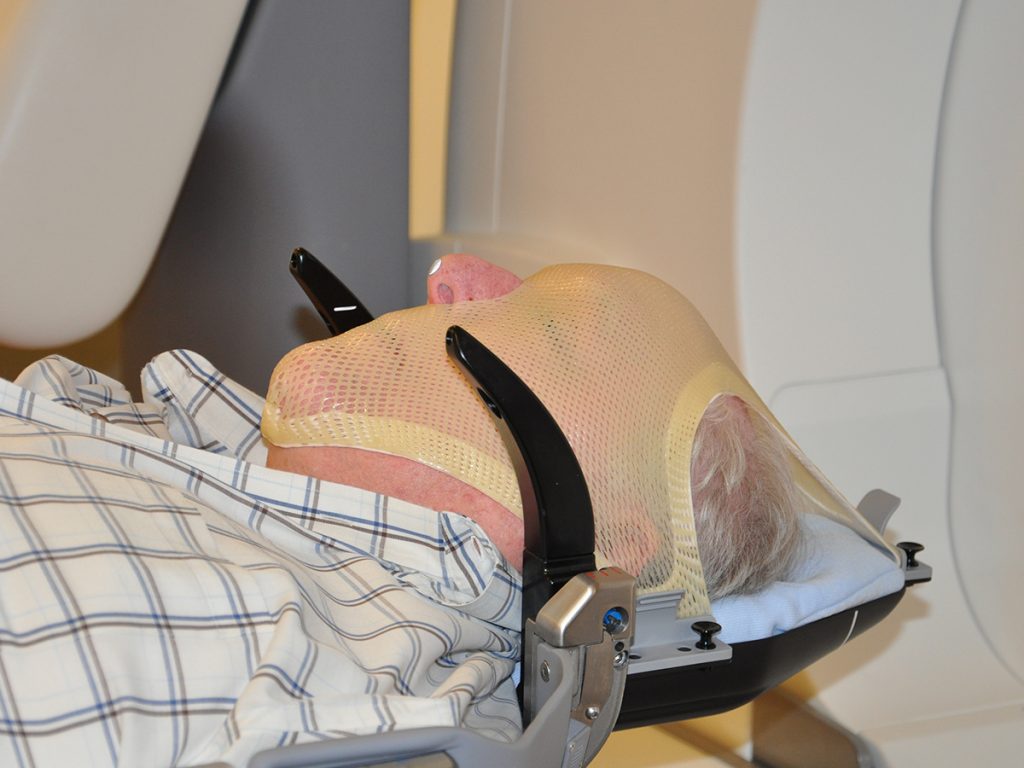
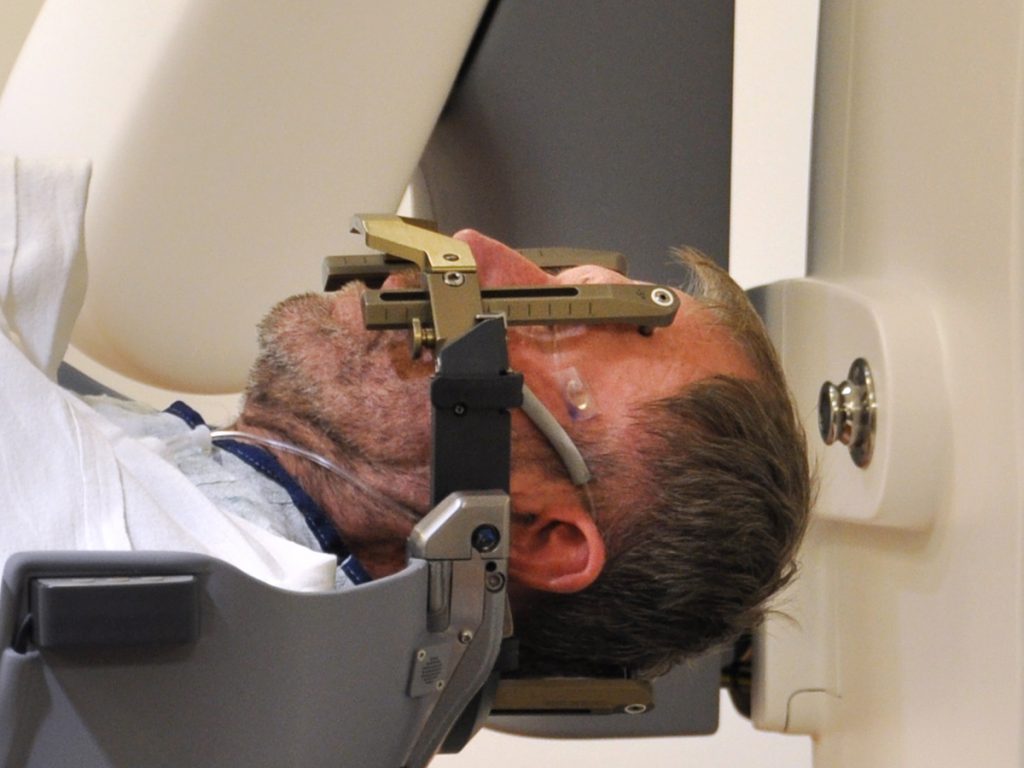
This frameless technology facilitated the expansion of fractionated radiosurgery, in which radiation is administered in small doses over several days to reduce side effects such as brain swelling. Fractionated radiosurgery with a mask allowed treatment of tumors that were too large to be safely treated in a single day with the conventional frame approach. Typically, patients undergoing frameless fractionated radiosurgery are treated in five days over 1-2 weeks. “We are giving the brain the opportunity to repair itself between each individual dose to reduce the risk of side effects,” he said.
His career has spanned the entire spectrum of focused radiation technologies, beginning in 1991 and continuing with LEXAR radiosurgery in 1999, Novalis linear accelerator in 2003, Gamma Knife™ stereotactic radiosurgery in 2013 and the TrueBeam linear accelerator in 2016.
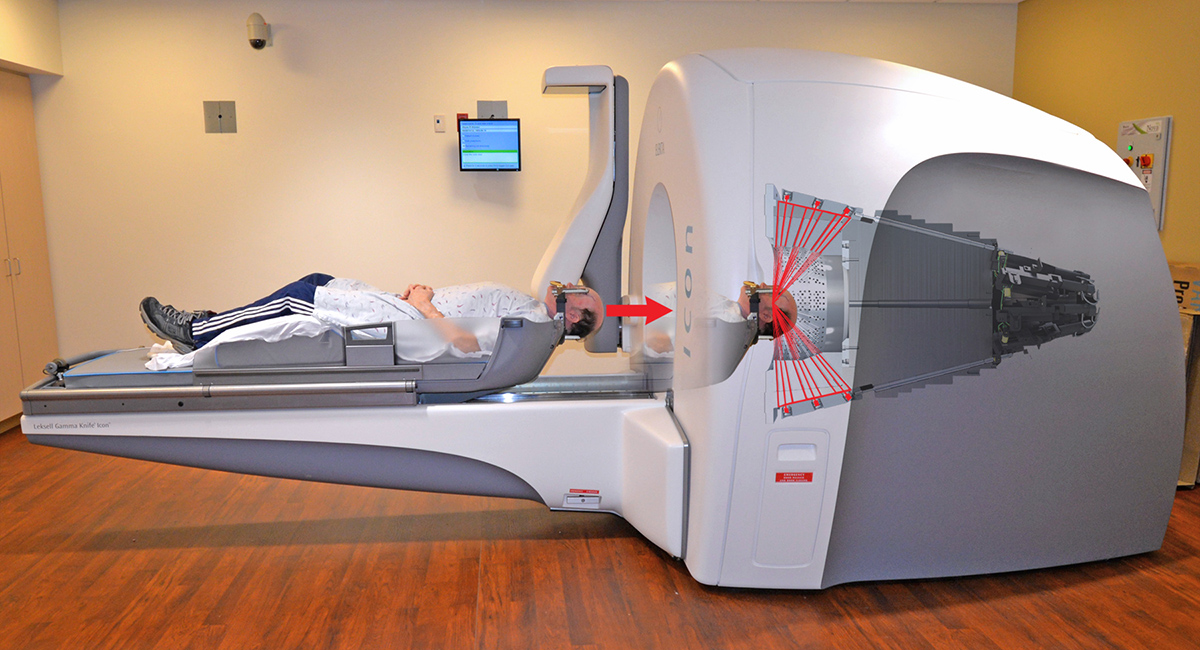
Looking ahead, Dr. Warnick makes clear that “we are not done innovating.” He said the synergy between Jewish, TriHealth, and Christ hospitals will continue to bring innovations in stereotactic radiosurgery to Greater Cincinnati.
Photos of celebrations held at each radiosurgery center:
